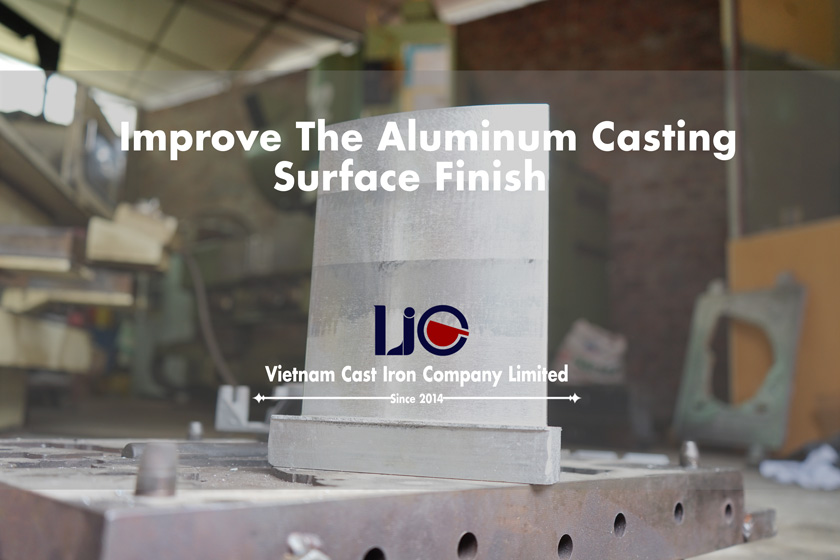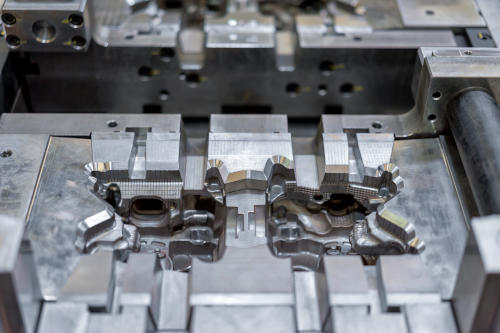A comprehensive overview to Aluminum Casting processes
Whatever You Required to Know About the Uses and Conveniences of Aluminum Castings
Aluminum castings play a necessary function across numerous industries, providing unique properties that boost product performance. Their lightweight nature and strength make them optimal for applications in auto and aerospace sectors. Furthermore, the flexibility of casting approaches enables elaborate designs and tight resistances. As the need for lasting solutions increases, recognizing the advantages and applications of aluminum castings comes to be progressively essential. What particular advantages do they use over other products?
Summary of Aluminum Casting Processes
Aluminum casting processes include a variety of methods utilized to form liquified aluminum into wanted forms. These techniques consist of sand spreading, pass away spreading, and financial investment casting, each offering distinctive advantages depending upon the application (Aluminum Casting). Sand spreading involves developing a mold and mildew from sand, enabling elaborate layouts and huge components, while die spreading makes use of high pressure to infuse molten aluminum right into steel mold and mildews, making sure accuracy and smooth surfaces. Investment casting, likewise called lost-wax casting, produces complicated shapes with exceptional dimensional accuracy, making it suitable for comprehensive parts
These procedures are defined by their capacity to generate lightweight, sturdy parts that exhibit exceptional deterioration resistance. The flexibility of aluminum permits personalization in numerous industries, from auto to aerospace. In addition, the ability to reuse aluminum enhances the sustainability of these casting procedures, reducing environmental impact while preserving material stability. Comprehending these techniques is essential for enhancing manufacturing performance and attaining top quality aluminum castings.
Secret Applications of Aluminum Castings
Aluminum castings play an essential role throughout various sectors, especially in automotive, aerospace, and customer electronic devices. In the vehicle market, they add to lightweight frameworks that enhance fuel efficiency. Aerospace components benefit from aluminum's strength-to-weight ratio, while customer electronics utilize its versatility for effective production.
Automotive Industry Applications
As the automobile industry proceeds to advance, makers significantly rely upon aluminum castings for their lightweight yet resilient properties. These castings play a crucial function in improving automobile performance, gas performance, and general safety. Key applications include engine blocks, transmission housings, and architectural elements, which gain from aluminum's outstanding strength-to-weight ratio. Furthermore, aluminum castings promote intricate geometries, permitting innovative designs that boost aerodynamics and lower drag. The corrosion resistance of aluminum also adds to long life, minimizing upkeep expenses for both makers and customers. As electrical cars gain popularity, aluminum castings are crucial for battery rooms and other components, better solidifying their significance in the future of automobile manufacturing.
Aerospace Component Manufacturing
In the aerospace market, aluminum castings are integral to the manufacturing of lightweight, high-performance components. These castings are essential for producing parts such as engine real estates, structural frames, and touchdown gear elements, where weight decrease is vital for gas efficiency and general efficiency. The superb strength-to-weight proportion of aluminum permits the advancement of complicated geometries that enhance aerodynamics. In addition, aluminum's resistance to deterioration contributes to the long life and reliability of aerospace components, ensuring safety in trip procedures. The spreading process additionally permits exact resistances, which is very important in meeting strict aerospace industry standards. On the whole, aluminum castings play an essential role beforehand aerospace innovation while sustaining the industry's promote sustainable practices.
Customer Electronic Devices Manufacturing
The usage of aluminum castings in consumer electronic devices production has actually become progressively substantial as a result of their lightweight and durable residential or commercial properties. Suppliers utilize these castings to create components for various gadgets, consisting of mobile phones, laptop computers, and pc gaming consoles. Aluminum's exceptional thermal conductivity likewise assists in heat dissipation, boosting tool efficiency and long life. Additionally, the adaptability of aluminum permits detailed layouts and intricate geometries, allowing smooth and modern appearances that interest customers. Additionally, aluminum castings can be easily reused, lining up with the expanding need for lasting manufacturing techniques. As innovation advances, the duty of aluminum castings in developing ingenious and effective consumer electronic devices is anticipated to expand, making them a staple in the industry.

Benefits of Utilizing Aluminum Castings
While different products are available for casting, aluminum stands apart as a result of its special combination of light-weight homes, strength, and corrosion resistance. The reduced density of aluminum makes it an excellent choice for applications where weight reduction is crucial, such as in the auto and aerospace sectors. Its superb strength-to-weight proportion enables producers to develop resilient parts without including too much weight.
In addition, aluminum castings can be produced with detailed designs and tight resistances, making it possible for complicated geometries that are challenging to accomplish with other materials. The flexibility of aluminum permits for different casting techniques, consisting of sand, pass away, and financial investment spreading, satisfying diverse manufacturing requirements. In addition, aluminum's simplicity of machining and finishing improves its allure, promoting the development of premium surface finishes. Generally, the benefits of utilizing aluminum castings contribute to improved efficiency and performance in many applications throughout various industries.
Corrosion Resistance in Aluminum Castings

Natural Oxide Layer
An all-natural oxide layer forms on the surface area of aluminum castings, giving a crucial obstacle against environmental aspects that can lead click over here to damage. This thin, protective movie is a result of the aluminum's response with oxygen airborne, properly shielding the underlying metal from wetness, chemicals, and pollutants. Because of this, aluminum castings show outstanding deterioration resistance, which enhances their longevity and sturdiness in numerous applications. The oxide layer is not only useful for protection but additionally adds to visual top qualities, as it can develop a matte surface that several markets like. In addition, this all-natural procedure lessens the need for additional coatings, making aluminum castings an economical choice for makers looking for trusted, lasting products.
Alloy Variations Influence
The structure of aluminum alloys greatly affects their deterioration resistance properties in castings. Various alloy variations, such as 1xxx, 2xxx, and 6xxx series, show distinctive degrees of susceptibility to rust. For instance, 1xxx alloys, mostly composed of pure aluminum, offer excellent rust resistance due to their high pureness. In comparison, 2xxx alloys, which contain copper, might experience significant rust when exposed to harsh settings. 6xxx alloys, integrating magnesium and silicon, strike a balance between strength and resistance. The visibility of alloying elements can enhance or reduce safety oxide layers, eventually affecting durability and efficiency. Understanding these variants is crucial for picking the right alloy for particular applications where deterioration resistance is vital.
Design Flexibility and Personalization
Various products exist for casting applications, aluminum stands out due to its remarkable style adaptability and potential for customization. This versatility permits designers and designers to produce intricate forms and types that meet particular useful demands. Aluminum Casting. The reduced thickness of aluminum allows lightweight layouts, which is specifically beneficial in markets such as vehicle and aerospace, where weight reduction is necessary
Aluminum castings can be customized to numerous specs, including wall thickness, surface area finish, and dimensional resistances. This flexibility not just boosts the visual charm yet additionally enhances the performance of the final item. Furthermore, advanced techniques such as 3D printing and computer-aided design (CAD) further promote the customization process, making it possible for fast prototyping and reducing preparations. Consequently, aluminum castings can properly fulfill the diverse requirements of different sectors while using makers the capability to innovate and react quickly to market needs.
Comparison With Other Casting Products
While numerous casting materials each have their special advantages, aluminum continually shows exceptional homes that make it a favored option in several applications. Contrasted to iron and steel, aluminum is significantly lighter, which decreases the general weight of ended up items, enhancing gas efficiency in auto and redirected here aerospace industries. Aluminum uses outstanding deterioration resistance, requiring much less upkeep over time contrasted to products like iron, which can rust.
When juxtaposed with plastics, aluminum's stamina and resilience go beyond numerous artificial alternatives, making it ideal for requiring settings. Furthermore, aluminum's thermal and electrical conductivity is remarkably greater than many other steels, making it perfect for applications requiring effective warm dissipation or electric elements.

Future Patterns in Aluminum Casting Innovation
Improvements in aluminum casting technology are established to redefine its applications across numerous industries. Innovations in automation and robotics are enhancing production processes, improving performance and precision. The assimilation of expert system and artificial intelligence makes it possible for real-time surveillance and predictive maintenance, minimizing downtime and boosting quality control.
Additionally, the advancement of sophisticated alloys is broadening the efficiency capabilities of aluminum castings, making them ideal for more requiring applications, particularly in automotive view publisher site and aerospace fields. Lasting practices are likewise gaining grip, with raised emphasis on recycling aluminum and lowering carbon footprints during manufacturing.
Additive manufacturing methods, such as 3D printing, are being checked out to produce intricate geometries that typical approaches can not attain, permitting better style flexibility. These trends suggest a future where aluminum spreading will certainly not only satisfy yet surpass market expectations, driving technology and sustainability in manufacturing.
Often Asked Questions
Just How Are Aluminum Castings Recycled After Use?
Aluminum castings are generally gathered, cleansed, and refined in recycling centers. The product is thawed down, refined, and after that reformed into new products, thus conserving resources and reducing ecological impact while keeping aluminum's preferable residential properties.
What Are the Typical Expenses Related To Aluminum Castings?
The regular costs connected with aluminum castings vary based upon variables such as complexity, volume, and product requirements. Generally, rates vary from a couple of bucks per pound to substantially higher quantities for intricate styles and large quantities.
How Do Aluminum Castings Compare in Weight to Steel Castings?
Aluminum castings evaluate substantially less than steel castings, typically around one-third the weight (Aluminum Casting). This minimized mass permits easier handling, transportation, and application in various industries, contributing to boosted efficiency in design and production processes
What Industries Primarily Rely Upon Aluminum Castings?
Various markets considerably count on aluminum castings, including automotive, aerospace, electronics, and durable goods. Their lightweight nature, deterioration resistance, and versatility make them important for producing elements in these markets, improving efficiency and effectiveness.
Are There Any Wellness Risks Connected With Aluminum Casting Processes?
Health threats related to aluminum casting procedures consist of direct exposure to fumes, dirt, and chemicals, which can cause respiratory problems and skin irritation. Correct security procedures and tools are vital to alleviate these prospective hazards in the office.